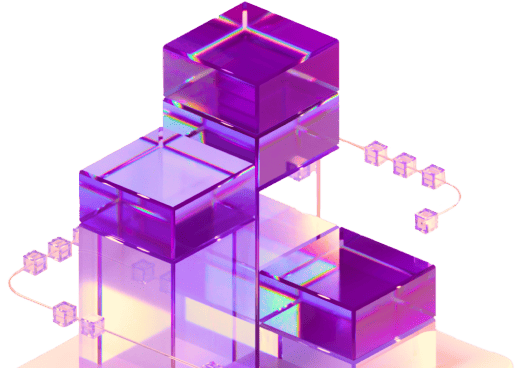Global asset management giant BlackRock has officially entered the on-chain staking landscape with the launch of USDTB, a tokenized U.S. Treasury-based staking pool. This new product, backed by tokenized real-world assets (RWAs), marks a historic moment for institutional adoption of decentralized finance, bridging traditional yield-bearing instruments with blockchain-native staking mechanics.
USDTB offers digital asset holders the ability to stake into tokenized short-term U.S. Treasuries while earning competitive, stable yields directly on-chain. Designed primarily for crypto-native funds, DAOs, and fintech platforms, the initiative reflects BlackRock’s growing strategy around RWA integration into digital finance infrastructure.
What Is USDTB? A Tokenized Treasury Staking Pool
USDTB is a blockchain-based representation of a U.S. Treasury bond-backed staking pool, issued and managed by BlackRock through its digital asset division. Each token represents a pro-rata share of short-duration U.S. Treasury bills held in custody and tokenized through a regulated partner framework.
Unlike traditional staking protocols, which involve the delegation of tokens to validators on proof-of-stake (PoS) networks, USDTB enables users to:
-
Stake their stablecoins (USDC or USDT)
-
Receive USDTB tokens representing ownership and yield entitlement
-
Accrue returns based on real-world interest rates from Treasuries
-
Redeem or trade the tokens via supported DeFi and CeFi venues
The yield generated is derived from the interest earned on the underlying government bonds, making it low-risk and highly transparent — a sought-after feature in current volatile markets.
Why BlackRock Is Betting on RWA Staking
According to a statement by Rob Goldstein, BlackRock’s Chief Operating Officer, “USDTB is the first step in aligning traditional capital markets with blockchain-based liquidity systems. We believe real-world assets, when brought on-chain, can unlock efficiency, transparency, and new forms of collateralization for the global financial system.”
The move reflects a broader institutional trend: the tokenization of real-world assets is expected to become a multi-trillion-dollar market, with Treasuries, private credit, and real estate leading the charge.
Staking RWA-backed tokens offers investors:
-
Stable yields not tied to crypto market volatility
-
Regulatory clarity, especially for institutions
-
Composable integration with DeFi protocols for leveraged yield strategies
USDTB’s design makes it compatible with leading DeFi infrastructure such as Aave, Compound, MakerDAO, and RWA-focused protocols like Centrifuge.
Yield Mechanics and Security Framework
USDTB targets an annualized yield of 4.8%–5.1%, aligned with the current U.S. Treasury market for 3- and 6-month bills. All assets are held in segregated custody by a licensed U.S. financial institution and are tokenized via a smart contract framework audited by Trail of Bits and OpenZeppelin.
Stakers receive real-time visibility into:
-
On-chain proof-of-reserves
-
Asset maturity ladders
-
Interest accrual rates and upcoming redemptions
-
Smart contract governance via multisig and DAO oversight
This robust structure aims to ensure institutional-grade transparency and minimize risks of mismanagement or fraud, key concerns in the RWA tokenization space.
Institutional Demand and Market Impact
Since its private beta launch in November, USDTB has already attracted over $600 million in deposits, with early adopters including:
-
Crypto hedge funds looking for stable off-market yield
-
Treasury managers at DeFi protocols seeking safe capital parking
-
Family offices and high-net-worth individuals seeking tokenized exposure to U.S. government debt
Analysts at JPMorgan and Galaxy Digital project that USDTB could reach $5 billion in AUM within 12 months, especially if paired with leverage strategies or wrapped into higher-yield structured products.
Integration With OnStaking and RWA Platforms
OnStaking, one of the leading platforms specializing in both crypto-native and real-world asset staking, announced a strategic integration with USDTB. Users will now be able to:
-
Stake stablecoins directly into the USDTB pool via the OnStaking dashboard
-
Monitor USDTB’s real-time APY, bond maturity schedules, and liquidity
-
Pair USDTB with synthetic RWA tokens to access additional rewards
This integration offers seamless exposure to traditional yield without leaving the crypto ecosystem, creating a bridge between compliance and innovation.
Regulatory Landscape and Compliance Considerations
USDTB is launched under a Reg D private placement framework, meaning access is currently limited to accredited investors and institutional clients. However, BlackRock is reportedly working with U.S. regulators to explore future 1940 Act-compliant versions for retail markets.
The tokenization process follows strict AML/KYC onboarding, and all underlying Treasuries are marked-to-market daily by an independent pricing oracle system.
Industry commentators suggest USDTB could become the “reference model” for compliant RWA staking, setting new standards for other financial giants eyeing the DeFi space.
Future Outlook: RWA Staking Beyond Treasuries
While USDTB is focused on Treasuries, BlackRock hinted that similar products based on:
-
Municipal bonds
-
Investment-grade corporate debt
-
Tokenized private credit portfolios
...are under active development. The long-term vision is a modular staking suite where users can choose from a menu of tokenized real-world assets based on risk, duration, and yield preference.
Conclusion
With USDTB, BlackRock has sent a strong signal to the world: the future of yield lies in the fusion of traditional finance and blockchain technology. This launch not only provides a stable, accessible on-chain income product, but also opens the door for greater institutional participation in decentralized ecosystems.
As the lines blur between RWA, staking, and DeFi composability, BlackRock’s move may well mark the beginning of a new chapter in programmable finance.

 English
English
 Deutch
Deutch
 Espanol
Espanol
 Francais
Francais
 Portugues
Portugues
 日本
日本
 한국인
한국인
 Türk
Türk
 Русский
Русский
 Tiếng Việt
Tiếng Việt

